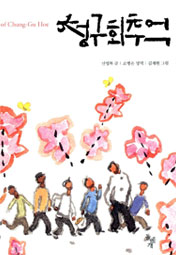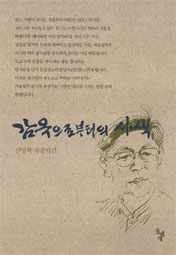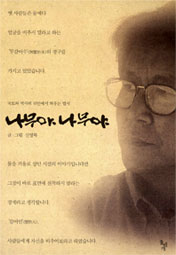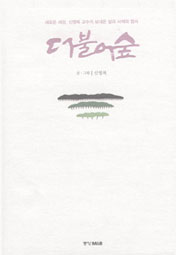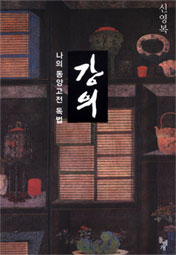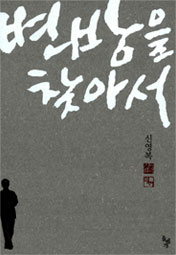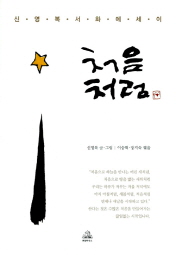글모음
Kyongju, Silk Road, Buddhism, and the 21st CenturyFrom Substance-centered Paradigm to Relation-centered One by Professor Shin Young-bok (Sungkonghoe University) A New Century, A New Milleneum Thousand-year-old Kyoungju is a city that enables us to examine the past and the future by the thousand year, so the fact that this international academic conference on the upcoming milleneum is being held in Kyongjuhas deep meaning. I think it is urgent to look back upon both the 20th century and the past thousand years with a broader perspective. The thousand-year-old ancient city of Kyongju offers a good lookout for this task. In addition, South Korea, where this ancient city is placed, still clings to the political, economical, social, and cultural ethos of the 20th century; we find the intensified contradictions of modern capitalism, and the subordinate structure of the Cold War yet in place. Kyongju is a place where east and west, old and new coexist with modern industrial capitalism. Therefore, it is an ideal place to clearly and directly reflect upon Korea's future in the 21st century and the new millenium. The challenge facing us today is to find a way for a better future, to begin creating the 21st century and the new millenium, to do away with the history of oppression and exploitation for the last thousand years, and to sweep away the age of hot and cold wars of the past hundred years. We have to sublate [aufheben] all the values that the human race has created, including capitalist and socialist systems. Most of all, we must get rid of the most destructive elements of modern global capitalism. And, when we achieve our aims, we will be able to meet "the smiles of the millenium" which the people of Shilla inscribed in the face of their Buddha over a thousand years ago. Last year I embarked on a one year world tour in which I visited almost fifty world-famous ruins where I was able to contemplate both the past and the future. I recorded the epiphanies I had during my travels in a book called Trees Together [dubulo sup] subtitled "A Tree Told a Tree, Let's Be a Forest Together." I thought the title of my book suggests the promise we should make on the eve of a new millenium. If we look back to the long history of the humankind, we see that there has always been sincere and ardent hope for innumerable trees to live together, but that this hope has never been realized, not even once, because these trees have been cut to serve some other aims. The reality of our history is that the absolute majority of people have experienced only contempt and oppression. The masses have been deprived of their freedom and their true natures imprisoned by the organized minority. All of us, individually and collectively, regionally and internationally, have been living this common history.
Beyond Orientalism In Korean calligraphy, if a stroke is done wrong, the artist cannot erase nor correct it. He has no choice but to draw the next stroke so as to hide the previous mistake, to make the next stroke harmonize with the first unsatisfactory one. And if one line of characters is wrong, he must strive to make the next line free of errors, but the most important thing is that the next line of characters should help and support the first one. On the finished page of a calligraphy piece, stroke and stroke, character and character, line and line should help each other. It is this relationship between lines, strokes and characters that helps to overcome any mistakes made in the work. A work in which individual elements have some flaws but the overall harmony is good is said to be a much more refined work of art than one whose individual elements are perfect. This is not so much the story of beautiful work of art as that of human relationships and simultaneously, of civilization. Whether this is Korea's typical aesthetics or philosophy is up for interpretation, and of course I don't think this is peculiar only to Eastern thinking. However, in my opinion, to complete the run of one's life on earth one must depend on human relationships; what is left of one's self after death also depends on human relationships. This is the Korean interpretation of relation-centered paradigm.
The Book of Changes [周易] classfied all the phenomena of the universe into sixty four categories. The most ideal one among sixty four categories is Ji-Chun-Tae[地天泰], because the relationship between earth and heaven is one of contact and communion. The chun trigram meaning heaven is below and ji trigram meaning earth is above. The positions are inverted; however, because the powers of heaven is bound to go above and the powers of earth below, we interpret this trigram as a form in which earth and heaven ideally interact. The philosophy of The Book of Changes focuses on relationships. One can say that this is China's basic thought on relation-centered paradigm. The Ghanges River which runs through the Indian subcontinent is, for most Indians and many other people, not simply a flowing river, but a metaphor for the continuity of our lives, displayed in its own continuous nature, which runs like a thread between our past, present and future lives. The River stops for a moment in our worldly lives, then again goes to the other world. As it shows us our common human fate which flows throught the past, the present and the future flowing, it makes us ponder limitless Samsara (輪回, transmigration of the soul) and Yeongi (緣起, the chain of human affairs) which causes agreement between selfhood (Atman) and universe (Brahman). The Ghanges River, as a symbol, epitomizes relation-centered thinking by uniting self and space, worldly and otherworldly and all things in Nature. Life is not an isolated being but a totality of human relationships. The metabolism of life well indicates that the essential nature of life is not a closed and independent entity or substance, but an open structure which associates itself with outside matters and energies to keep itself. The reproduction of every lives shows the same thing. Life is there, where a self is able to produce another self that is not the same one. Evolution is also an open relationship between life and environments. Life is itself a totality of diverse relationships. The most advanced modern science, for example, the theory of relativity and quantum physics, give us a renewed view of the matter and the universe. Electrons, neutrons and photons, micro-particles, etc. in the microscopic world prove that it is neccessary to recognize that the basic unit of matter does not have absolute individual substance. The materiality itself cannot have static existence but rather a fluid one, constantly changeable through interactive relations and movements. As a result, modern science is, I think, trying to find a new paradigm in which every being is interpreted in terms of relations. Now, the eve of the 21st century, is the time for us to seriously reflect on the substance-centered essentialist paradigm that has concentrated on the ontology of individual existences and substances, discarding their -- far more real and important -- relations. The basic method of substance-centered thinking is Bun(分, dividing) and Suk(析, splitting), and it posits as absolute substances the merely individual entities obtained by dividing and splitting the world. This kind of thinking even reduces freedom, human rights, and progress (so-called universal values) to relationless independent substances under the pretext of universalism. Substance-centered thinking is the primary paradigm of modern capitalist system, and, at the same time, its fundamental contradictions. The task that lies ahead of us in the 21st century and the new millenium is to move from substance-centered paradigm to relation-centered one. To be sure, it requires us to renew our notion of relationship itself, but, first of all, we have to decide the minimum condition to set up authentic relationship. The minimum condition is the equality between various individual agents, because inequality makes it impossible to build authentic relationship itself. If a relationship is to exist, the basic condition must be one of equality. Every deterioration and destruction starts from the inequal situation, and accepting inequality results in the formation of hegemonic attitudes denying the existence of others. However, I have to emphasize that more important is, first, to realize that "an individual existence" is merely a concept, not a real thing, and, secondly, to criticize the present concept of equality, deeply colored with substance-centered thinking.
Substance-centered paradigm and Capitalism Korea is currently under IMF supervision and in economic crisis. Not only Korea but all Asian economies including Japan are now facing financial crises. The Western economies are also experiencing a growing economic crisis. The economy of the U. S. cannot be an exception, as many experts agree. This global crisis certainly represents a structural problem of the capitalist economic system itself. In spite of this, a fundamental examination of the capitalist system is not being undertaken. The ruling elites are wasting their efforts on treating individual symptoms. If we do not change our ways of thinking, we will not be able to avoid the enormous destruction of human and material resources that has been repeated in our modern history up until now. The heart of the today's global economic crisis is the fundamental contradictions of modern capitalism. The ceaseless movement of capital accumulation signifies substance-centered thinking that only wants to expand one's own self destroying any other relations in its way. Competition that presupposes somebody's sacrifice is possible only in substance-centered paradigm. The economic problem is a rather small one in the midst of the contradictions caused by capitalist substance-centered paradigm. The most serious one is the destruction of human relationships, caused by the structure of isolation in which people cannot contact each other. This structure is backed by commodities and the highest form of commodities of all, that is, money. Commodity production and the monetary system do not allow the consumer and producer to meet, to have meaningful relations. The process of reification which commodifies human relationships is the basic structure of capitalist society. In a word, the capitalist ontology, another name of substance-centered thinking, ultimately makes it impossible to build real human relationships.
The Premises of Relation-centered Paradigm There are some premises for a new, relation-centered philosophy. First, we need to shatter a too-familiar illusion that the history of capitalism has generally been one of increasing affluence. The affluence of capitalism has been and will be that of some specific continents, countries, corporations, and classes. If we are to speak of capitalist progress and affluence, we have to take into account the widespread and worsening poverty of Africa, Asia, and Latin America. We must remember the fact that thirty million people are starving even in America. The 'Big Five' enemies of the human race, i.e., poverty, disease, ignorance, pollution and corruption(crime), have been, as a whole, on the increase under the partial phenomenon of capitalist abundance. Second, my thoughts on the 'road' and the 'way.' With a road, the meaning of the process is realized at once when one reaches one's destination; conversely, the process of the 'way'(道, Tao) as a concept, has meaning in and of itself. The goal of the road is to reach the destination, and nothing more. However, in the case of the way, a short and efficient journey is not necessarily good since it is the process of the journey itself that has meaning. Whether it is a flower, a tree or an animal, in the world the most common principle is precisely 'the faster the growth the faster the downfall.' Of the cells, it is said that cancer cells are the ones that grow the fastest. In that sense, out of the societial structures in the history of humankind, capitalism is the one that has grown the fastest. The history of industrial capitalism is not quite two hundred years. The principle of nature, 'the faster the growth, the faster the downfall' can be applied to social systems. One should note that prevailing worship of efficiency and expertness, indeed, are not products of human logic, but rather of capitalist logic. In addition, we must reflect on the fact that they do not follow the logic of nature and life but that of capitalist ontology. The critical reflection on the virtues of speed may be the point of departure for full-scale criticism of this ontology. Third, a new understanding of the meaning of the unfinished. Of the sixty four trigrams in The Book of Changes, the very last trigram remains unfinished. The unfinished state of being is the universal form of all beings. The unfinished state is also the new starting point, and, at the same time, the point of reflection on the process underway. The unfinished state can mean the state of continuing endeavors. It is not desirable to set an ultimate goal. The process is much more important than the (at most temporary) goal. Lastly, we must understand that "'in the end, thoughts come from a warm heart." Generally, thoughts are understood as cold reason. In accordance, the assertion that thoughts are a warm heart can be seen as the opposite of the western view of idealism and rationalism. It it is precisely this idealism and rationalism that comprises substance-centered paradigm. The honorable experts that I have met all share a common trait. They have warm hearts. The fac! t is rather than possessing honorable hands, they possess honorable hearts. If these people have things next to them that are wrong, or works that is to be done, their hearts are the first to feel uncomfortable. Their discomfort clearly shows that they have already accepted those things or works in terms of relation-centered thinking. They do not fail to create a new relationship between those things or works and themselves.
The Silk Road of the 21st Century The essence of life and matter is not existence but relationships, and similarly, when the substance of a civilization exists in the form of capitalist ontology, it is bound to degenerate into barbarism. Like the history of the Roman Empire, Chin, the first unified dynasty in China, fell into this state. Therefore, the most important is the methodology of relationships. AlI things such as life, matter, individuals, groups, states and civilizations are defined by the nature of relationships they form, and by the ways they build relations, which brings us back to the issue of the 'way' I said above. The destination of the Silk Road, an east-west trade route, is Istanbul. I wrote the following message on a postcard in Istanbul in my book Trees Together: 'Here in Istanbul, I realize again that we all have deep love in our hearts for those things we don't have and those things that are different from ourselves.' However, in my opinion, although this kind of affection should naturally lead us to tolerance and reconciliation, this hasn't happened because the history of humankind has been a stormy one. We must understand why tolerance and reconciliation haven't been realized -- because the modern history of the human race has been running breathlessly in its stormy journey, without understanding others and without reflecting deeply on itself. The Silk Road presents a very important lesson about methods of communication. First, the Silk Road was a silk road. All ways of communication must be soft like silk, not hard like steel. The road must not be a paved one full of invasions and penetrations. Second, the Silk Road was not a one-way but a two-way road. Rather than a space for creation, the one-way road eventually becomes one of subordination. Third, the Silk Road was a place for the exchanges of both culture[文] and commodities[物]. The Road provided a space of exchange for culture more than commodities. Today's international inequality comes from the institutionalization of economic exchange, because economic exchanges are always done in terms of profits and losses. Furthermore, we cannot overlook the fact that there is, if ever, little amount of culture[文] in the daily movements of tremendous finance capital, which both dominate and disturb the current global market. The changing of a steel road to a silk one is creating a communication structure based on relation-centered thinking. When one is honest about those things that one lacks and when one is open about learning from others, then the steel road can be changed into a truly silk road. The exchange that occurs on this silk road isn't one of commodities but of cultures. Such a road cannot be a spearhead of economic exchange but mainly a way of cultural exchange.
The Face of Kyongju The train of the 20th century is moving ruthlessly towards the 21st century. However, the railroad track is the same. The conductors as well as the passengers do not seriously imagine another way. So the same difficulties will confront them, and unnecessary waste will probably continue for a long time. The history of Kyongju shows us much history and many relics, which calls for the rebirth of relation-centered paradigm. There is a legend about the founding of the Shilla Dynasty: six village chiefs (the main powers in Kyongju, the capital of the Shilla Dynasty) all agreed on a king to rule them. And there is the history of the Hwabaek system: although only allied nobles participated in the political process, the existence of a consensus system more than confirms that the relation-centered thinking allowed a certain level of democracy possible. Throughout the history of over a thousand years, Shilla did not have a hereditary monarchy, but three families became kings in turn, and furthermore there were three outstanding queens. This example can also be understood in the same context of relationship paradigm. The fact that Shilla's ideological boundaries embraced the three religions -- Confucianism, Buddhism, and Taoism -- hold the same meaning. All of these examples show th! at Shilla's fundamental social structure responded well the challenges of hybridity, according to relation-centered paradigm. Because of this, Shilla was able to unify the three ancient Korean kingdoms and realize brilliant cultural accomplishments. However, when Unified Shilla was unable to assimilate the conquered countries of Koguryo and Paekche, and when the Golpum(aristocracy) System was no longer able to maintain the social harmony -- in other words, when the relation-centered paradigms gave way to substance-centered one -- Unified Shilla was slowly weakened. The clear evidences of its weakening was in the last 150 years of the Shilla Dynasty during which there was a rise of nepotism and provincial family powers. The nepotism and provincial family powers merged arable lands, expanded farms, and created private military forces, which only tried to strengthen its own existence. The result brought about the downfall of Shilla. The history of Shilla provides many points to reflect on. When its people was working under the paradigm of relationships, its culture blossomed; conversely, when Shilla became fragmented by a philosophy forgetting the importance of relationships, the country took the cour! se of downfall. Kyongju shows us the two faces of the Shilla Dynasty operating under both the substance-centered paradigm and relation-centered one. First, the contrast between Namsan [South Mountain] and Wangreung [king's tombs]: Namsan is a symbol of people's relationship philosophy because in the valleys of Namsan there is perfect harmony in the relationship between the pagodas, mirupbul [statues of Maitreya or 'Merciful Buddha'] and unique pieces of rock sculpture. On the other hand, the Wangreung is a symbol of orthodox philosophy because of its homogenous and hierarchical nature, epitomized in its ostentatious display of worldly power. Second is the contrast between different philosophies of the Dabo pagoda and the Sukka Pagoda. The Dabo Pagoda has many levels and columns, corners and circles, lines and curves and Merangukjuk [梅蘭菊竹, four traditional precious plants, i.e., apricot blossoms, orchids, chrysanthenums and bamboos]; these things show us the aesthetics of relation-centered thinking, which consists of harmony within variation. On the other hand, Sukka Pagoda represents substance-centered thinking. There are no decorations or no assembled components, which gives the pagoda an air of severe solemnity. Kyongju gives us all these messages in the deep and sonorous ring of its temple bells, much like the divine beads of Indurachun [an otherworldly place in Buddhist philosophy]: Each bead reflects its own light and at the same time makes the other beads reflect their own lights. All these messages enable us to look back upon the thousand years behind us and look forward to the thousand years ahead of us. The task of changing substance-centered paradigm to relation-centered one is an unsettled question on the agenda of thousands of years of human history. This is the work of individual trees gathering together to form a beautiful forest. Even though their numbers were many and their hearts were kind, they were still weak and forced into subordination for several thousand years only because they were unable to work together and form a forest. History proves how difficult it has been for trees to form a forest. This is our hope: that those precious values what stronger powers under the substance-centered paradigm have been unable to pursue, we can claim with relation-centered paradigm. This hope will be "the new smiles of the new milennium" that Kyongju will give us. 이 글은 신영복선생님께서 1998.11.5 경주엑스포국제학술대회 기조강연시간에 강의하신 내용입니다.
|
| 분류 | 제목 | 게재일 | 미디어 |
|---|---|---|---|
| 대담/인터뷰 | “젊은이여, 스스로 ‘변방’에 서라” - 여성신문 1191호 2012.6.22 | 2012-06-22 | 여성신문 |
| 대담/인터뷰 | “청년시절만은 잃지 마라”- 손잡고더불어. 돌베개.2017수록 | 2016-01-22 | 한겨레 '이진순의 열림' |
| 기타 | 『담론-신영복의 마지막 강의』-『인문학 특강』교재 다운로드 | 2015-04-19 | 더불어숲 |
| 대담/인터뷰 | 가벼움에 내용이 없으면 지루함이 됩니다 - 손잡고더불어.돌베개.2017수록 | 2007-10-04 | 한겨레 매거진 ESC_탁현민대담 |
| 대담/인터뷰 | 감옥으로부터의 인간개조 - 한겨레21 2006.06.22 | 2006-06-22 | 한겨레21_한홍구 교수 |
| 대담/인터뷰 | 감옥은 제게 대학과 같았습니다. 신영복 교수 인터뷰 - 예스24 2004.02.01 | 2004-02-01 | 예스24 |
| 기고 | 강물과 시간 - 진보평론 제3호(2000년 봄호) | 2000-03-01 | 진보평론 |
| 기고 | 개인의 팔자 민족의 팔자 - 한겨레신문 1990.2.22. | 1990-02-22 | 한겨레신문 |
| 강연 | 경주엑스포국제학술대회 기조강연(영문) 1998.11.5. 1 | ||
| 강연 | 경주엑스포국제학술대회 기조강연(한글) 1998.11.5. |
Designed by sketchbooks.co.kr / sketchbook5 board skin
Sketchbook5, 스케치북5
Sketchbook5, 스케치북5
Sketchbook5, 스케치북5
Sketchbook5, 스케치북5




